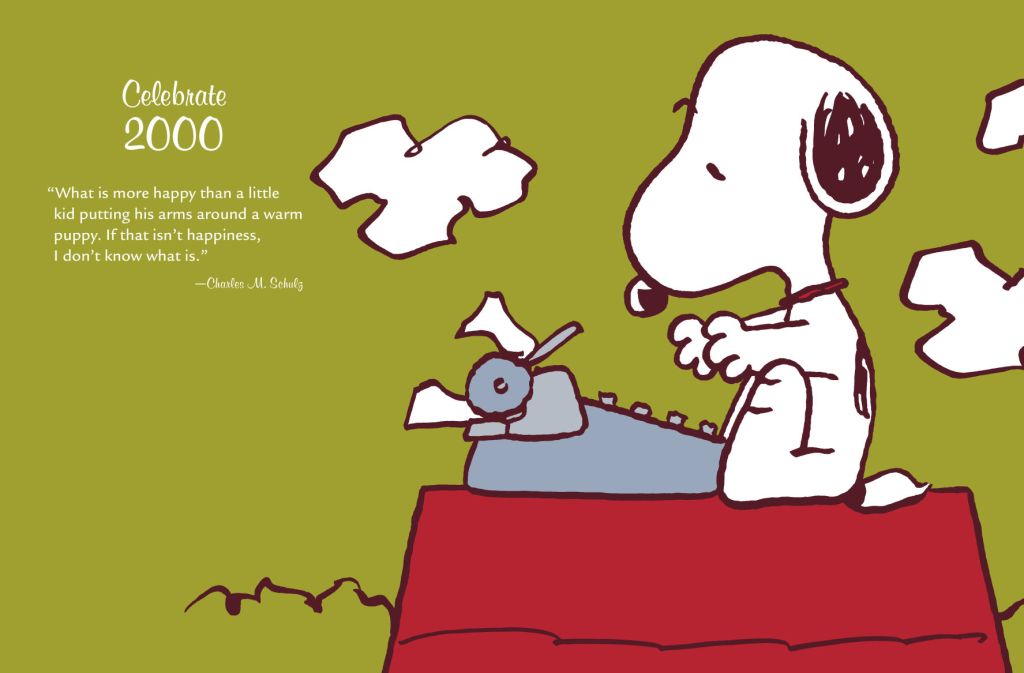Book review: ‘Celebrating Snoopy’
Published 12:00 am Sunday, December 10, 2017

- BOOKS-SNOOPY
”Celebrating Snoopy” by Charles M. Schulz. Andrews McMeel. 560 pp. $75. Review provided by The Washington Post.
Growing up in the early 1970s, I drew Snoopy constantly. I started young, depicting Snoopy on his doghouse as three small white hills on a red triangle. Before long, I graduated to Snoopy as a flying ace with a helmet and scarf.
Like too many kids, I eventually gave up the pleasures of drawing, but Snoopy served as a vital introduction to an unleashed imagination. While Charlie Brown dodges kite-eating trees and gets suckered into football pranks, his dog soars, swoops, battles, dances, skates and, best of all, writes. While Charlie Brown leans against a wall and discusses theology, Snoopy relishes the joys of make-believe.
This is made abundantly clear in the massive new anthology “Celebrating Snoopy,” with an introduction from The Washington Post’s “Comic Riffs” columnist Michael Cavna. Editors Alexis Fajardo and Dorothy O’Brien offer a unique retelling of Charles M. Schulz’s “Peanuts” by omitting strips that don’t feature Snoopy in a significant role. So instead of starting with the famous Oct. 2, 1950, image of Shermy commenting, “Good ol’ Charlie Brown. … How I hate him!”, “Celebrating Snoopy” launches with the strip published two days later: Snoopy proudly walks down the sidewalk with a tall flower in his collar and is accidentally watered by Patty. In the final panel, both flower and Snoopy’s mood are wilted. Another comic – a strip originally published Oct. 20, 1950 – shows Snoopy popping out of a jack-in-the-box. It’s his first impersonation, and he never looks back.
This is not the first “Peanuts” anthology to spotlight Snoopy. His flying ace adventures were recounted in “Snoopy vs. The Red Baron” (Fantagraphics, 2015), and his career as an author was honored in the lovely “Snoopy’s Guide to the Writing Life” (Writer’s Digest, 2002). But the oversized and colorful “Celebrating Snoopy” is the most ambitious move to put Snoopy at the center of all activity in the “Peanuts” universe – which is surely how Snoopy would have preferred it.
Of course, we know otherwise. “The Complete Peanuts” (Fantagraphics, 25 vols.), which set the gold standard in publishing archival collections of long-running strips, makes clear that “Peanuts” always was an ensemble show. This fact is underscored by the new “Complete Peanuts Family Album” (Weldon Owen), a one-volume encyclopedia of more than 70 characters, ranging from the iconic to the obscure. Along with a treasure of “Peanuts” ephemera, this wonderful collection offers first-appearance strips and smart essays from Andrew Farago covering everyone from Cormac to Truffles, and other names that even longtime Peanuts fans might not recognize.
Like any good encyclopedia, “The Complete Peanuts Family Album” can be browsed at will, starting at any page. “Celebrating Snoopy,” however, should be read chronologically to fully appreciate the evolutionary leaps of the dog at the center of it all. Aided by Fajardo’s brief but instructive essays, we see Snoopy first as an amusing neighborhood puppy – sort of a comic-strip version of Petey from “The Little Rascals” – only to quickly transform into an entirely different being. “For Snoopy, change begins in the form of a thought, and that thought is how miserable it is to be a dog,” Fajardo writes. By the mid-1950s, Snoopy had started trying on new personas: there sits the dog on the croquet pole, thinking himself a vulture. In 1958, Snoopy ascends his doghouse for the first time. From that point on, neither his life nor ours will be quite the same.
“The best thing I ever thought of was Snoopy using his own imagination,” Schulz once said. The transformation was evident from the start. In 1957, Hugh Morrow wrote in the Saturday Evening Post, “Snoopy of late has taken to dancing on his hind legs, thereby achieving a certain superiority over the children because he is able, while dancing, to ignore them.”
For anyone who has ever looked at a dog’s twitching paws and wondered just what was going on in that mind, Snoopy provides all the best answers. And as David Michaelis revealed in “Schulz and Peanuts” (Harper, 2007), Snoopy’s fantasy life also offered glimpses into Schulz’s own life and passions. Such was the case in 1966, when a fire in Schulz’s studio inspired a series in which Snoopy’s doghouse burns down. While Charlie Brown worries about the insurance policy and Lucy insists the tragedy is punishment for various sins, Snoopy quietly walks over to the charred remains, pauses and climbs back on top of what’s left of his rooftop.
More than a half-century later, “Peanuts” fans would recall this story upon hearing that wildfires were threatening the Charles M. Schulz Museum and Research Center in Santa Rosa, Calif. His widow lost her home to the blaze, but the museum and its treasures were spared. With all the spirit of Snoopy climbing back on top of his doghouse, the museum has since reopened. It’s yet another reminder of the enduring qualities bestowed by one of our greatest cartoonists on a most uncommon dog.
– Reviewed by Michael Tisserand, who is the author of “Krazy: George Herriman, A Life in Black and White.”






